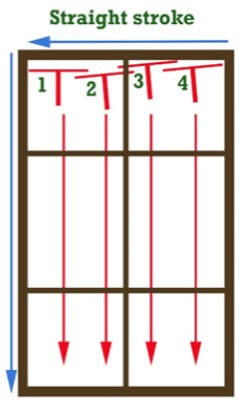Many, many of our clients have been greatly confused by the insurance documents they get when filing a claim for storm damage on their property, so we're responding to the many questions we get about this with an article explaining the difference between these 2 policy types.
What Happens When You File A Claim?
When you call your insurance company's claims department and tell them you had a hail storm, they will log a claim and schedule an adjuster to come visit your property. By the way, this is exactly why you don't ever want to call your claims department after a storm. You should either call a roofing contractor and request an inspection, or you should call your insurance agent and ask for a recommended roofing contractor. Unless we get a monster, granddaddy-of-them-all kind of storm like we had in July last year, don't call your claims department until after a roof inspection so you know if you really have damage or not.
When your adjuster comes out, he will assign a value to the repairs that are necessary to be done. This is your claim amount. Then he will depreciate that amount based on the age (and some other factors) of the items damaged. Most of the time, it's the roof that gets depreciation applied, but other items can have it, too. The depreciation amount gets deducted from the claim amount. After that, they subtract out your deductible, too. This is your share of the claim, and by law, it is the responsibility of the homeowner to pay this. The roofer cannot legally offer to pay all or any part of it.
After the depreciation and deductible have been subtracted from the claim amount, what's left is called the Actual Cash Value. This is the amount that the roof is actually worth right now, and that is the amount of the check you will receive from the insurance company...At first!
The Reason This Is Confusing...
Most insurance policies will cover Replacement Cost Value. That means that they are not going to give you what your roof is actually worth right now, they are going to pay you to replace your roof at today's costs. It kind of freaks people out, though, when they get a check from the insurance company for – say - $4,000 and they have a quote from a roofer for $9,000. They think, “How in the world am I going to get my roof done? I can't come up with the extra money!”
Even though the adjuster does his best to explain this to a homeowner, oftentimes the homeowner doesn't understand how the process works. Many times, the homeowner is not home when the adjuster comes out, so all they know about the claim is the check amount they receive in the mail.
Replacement Cost Value (RCV) means that you will get all the money that it costs to replace your roof – minus your deductible. Actual Cash Value (ACV) is the amount that your current roof is actually worth, today. Here's where it can get really confusing. Even though you may have an RCV policy, when you look at your claim amount, it may show a dollar amount for Actual Cash Value. Yikes! Does that mean that's all the money you'll get? It may or it may not. That's why it's best to ask your agent about your policy coverage. He can explain if you'll be getting more money from the claim or not.
If you have an RCV policy, like most people do, you will get another check after the repair work is complete. At that point, the insurance company will send you the depreciation money. If you have an ACV policy, it's basically WYSIWYG (pronounced wizzy-wig). That means What You See Is What You Get. The amount of money on your check is all the money you'll get to replace your roof.
Think of it this way:
If you have a 2003 Honda Accord and it gets totaled with hail damage, your insurance company will not give you the money to go buy a 2017 Honda Accord. They are going to pay you what your 2003 Honda Accord is actually worth on the day it was totaled, and no more. That's Actual Cash Value. If they paid you to buy a 2017 Honda Accord, that's like a Replacement Cost Value policy for your home.
The Reason This Matters To You And People You Know...
If there is a hailstorm in the area, I commonly see people make a couple of major mistakes.
- They immediately call their claims department asking the insurance company to do an “inspection” for damage. Remember, that's not what the adjuster's job is. He's there to assign a value to damage for the claim you have submitted.
- They don't check to see what type of policy they have before calling in the claim.
I strongly recommend that before you call in a claim, call your insurance agent and ask what type of policy you have. I would go one step further... Before there's even a hailstorm, call your agent and ask that question. If you find out you have an ACV policy, you may ask about switching to an RCV policy so that if you do sustain storm damage, you don't have to come up with a huge amount of money out-of-pocket for the repairs.
If you are on ACV, there may be a reason, such as having out-dated, obsolete shingles, or other reasons. However, if you have a storm in your area, you will be greatly benefited by having an RCV policy and not an ACV policy. Talk to your insurance agent and ask these questions. Hopefully I haven't made this clear as mud.





